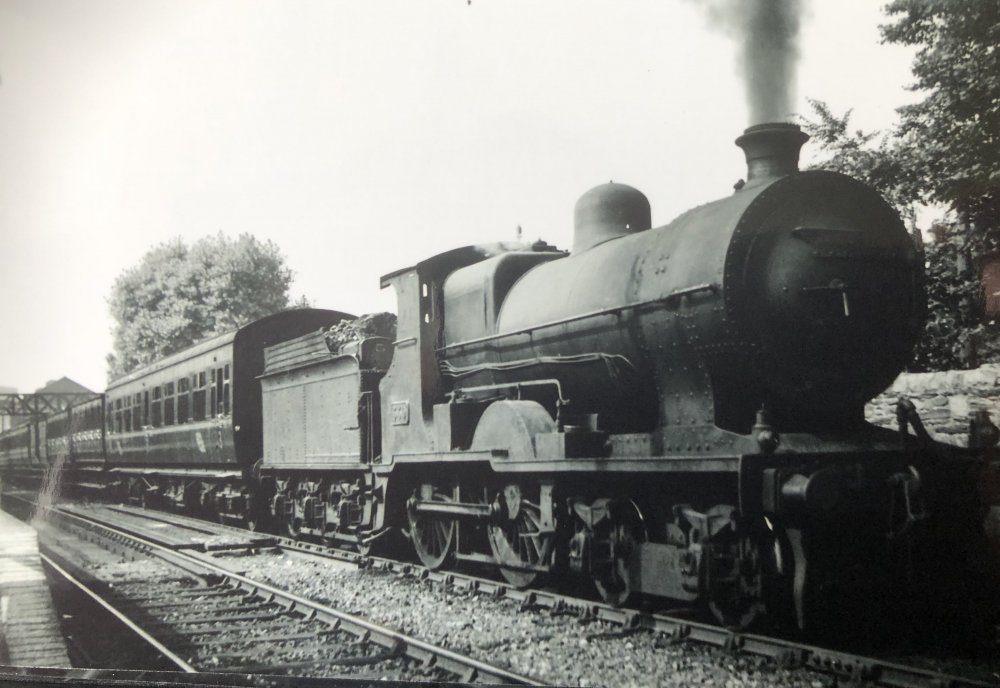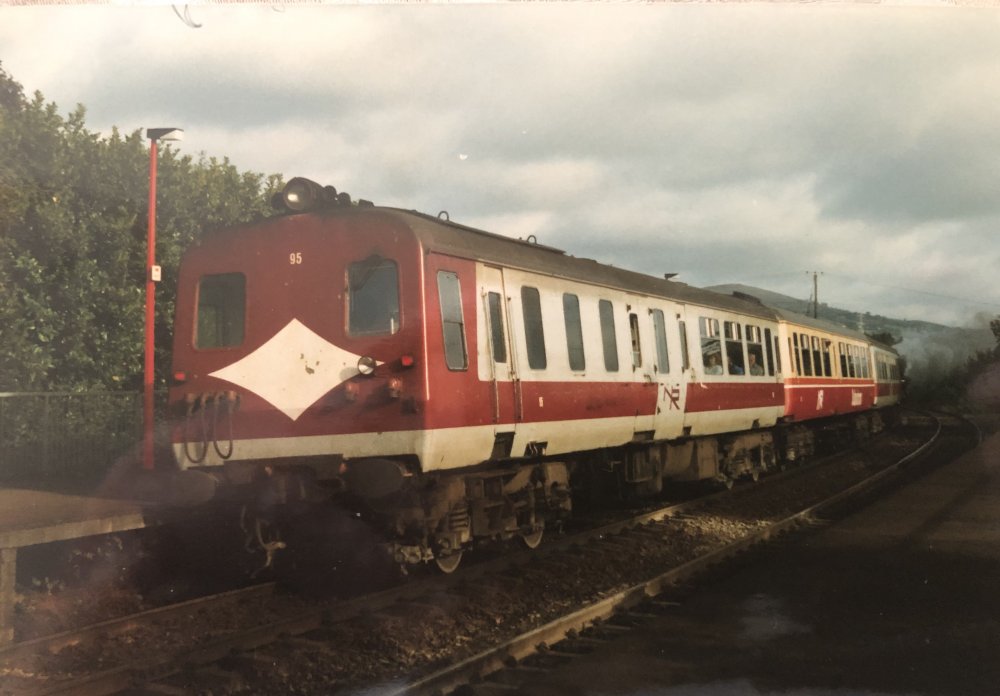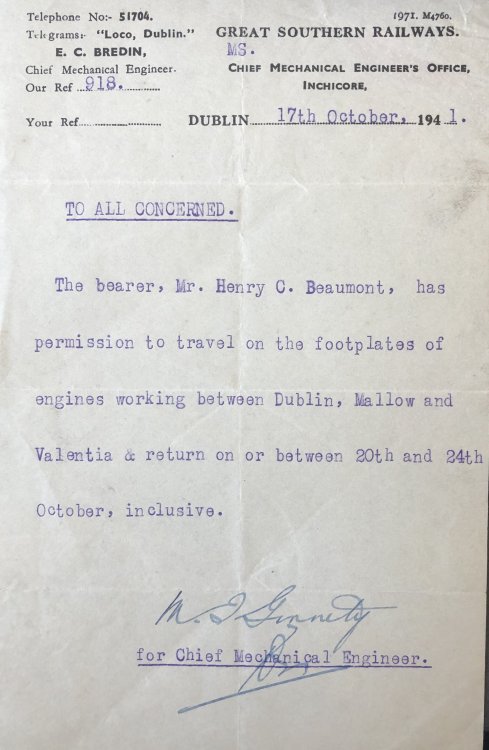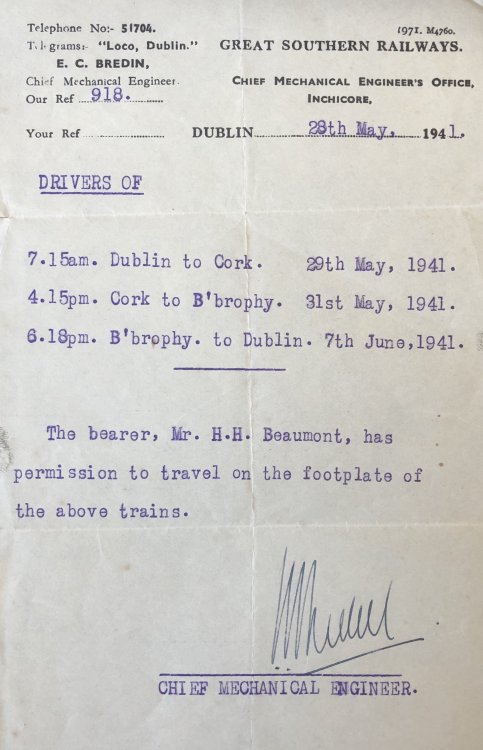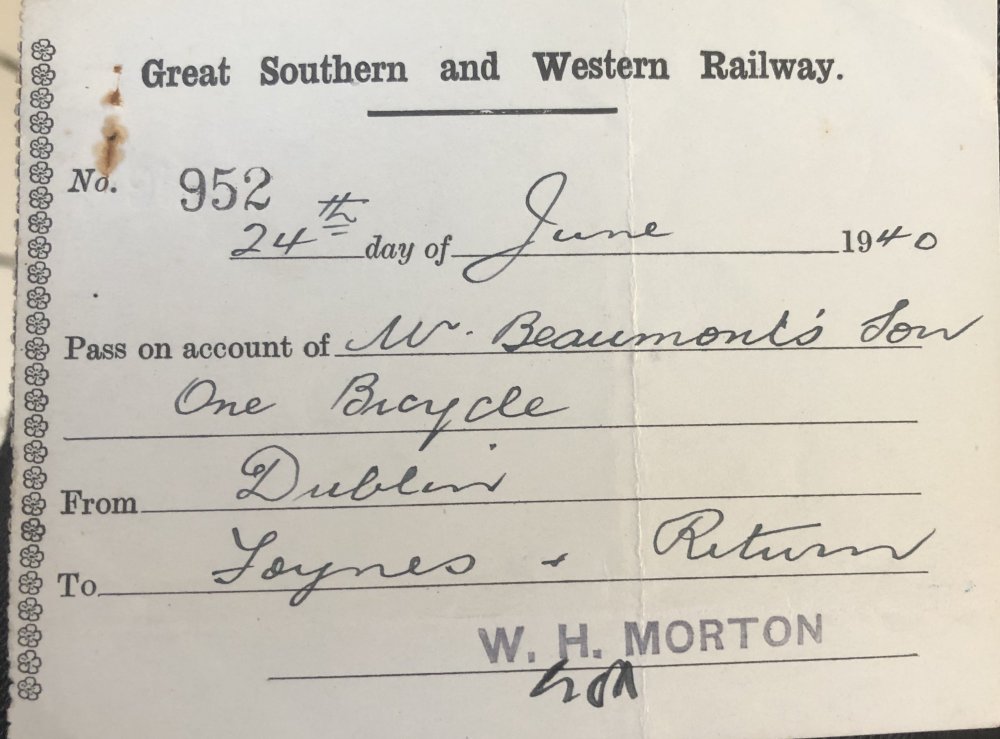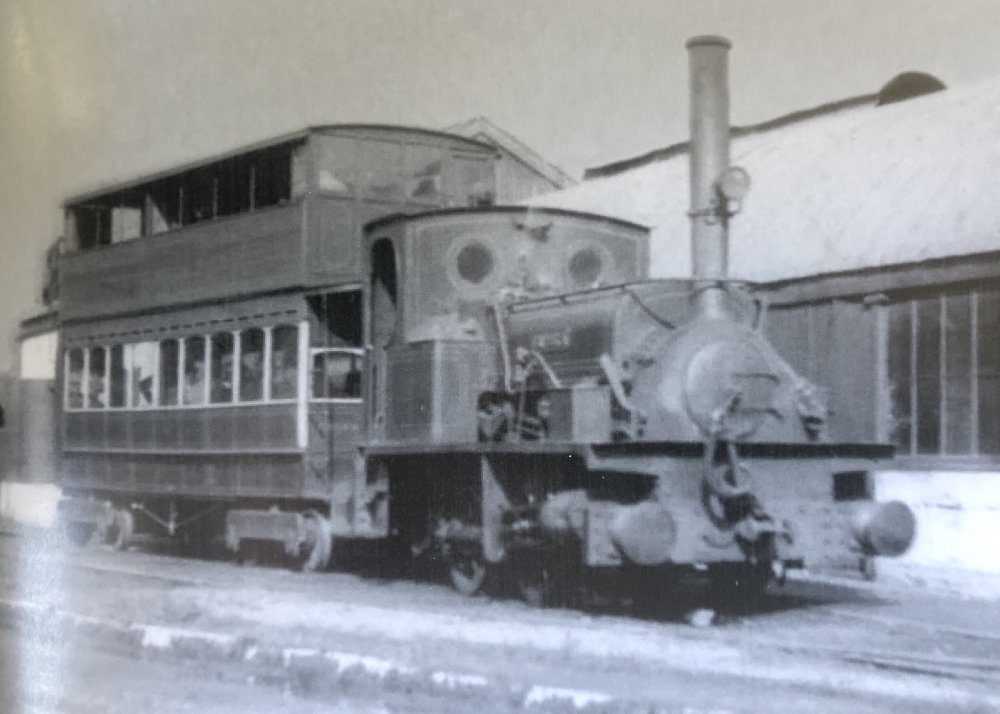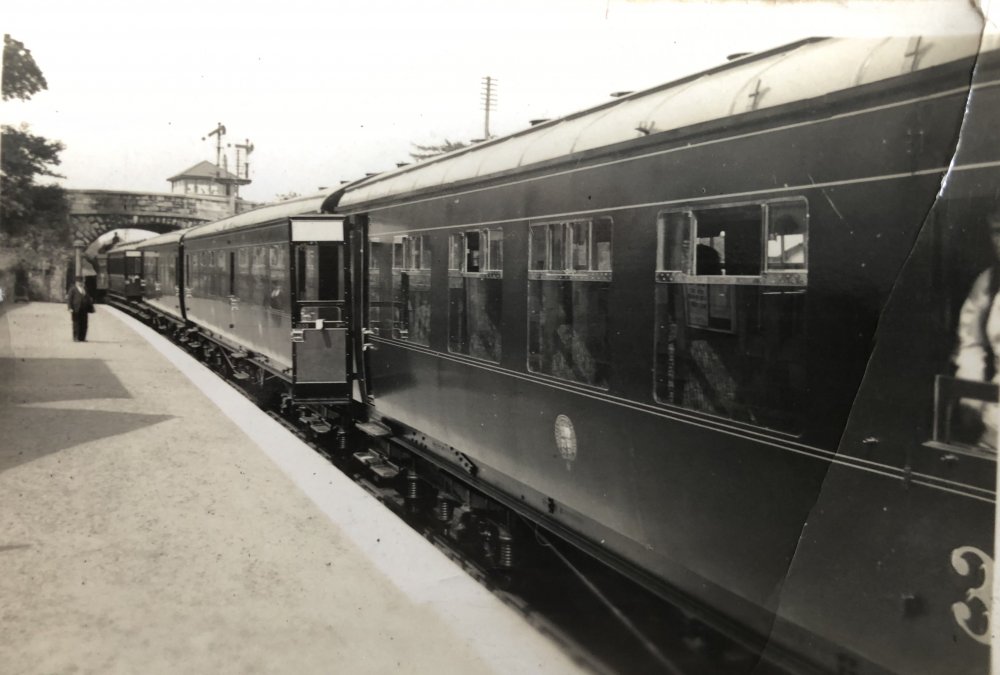-
Posts
15,873 -
Joined
-
Last visited
-
Days Won
393
Content Type
Profiles
Forums
Events
Gallery
Everything posted by jhb171achill
-
Yes, I couldn't agree more, minister. NIR have had variations of the exact same logo from 1968 to 1996 when they became Translink in image terms - now, here's a weird one logo-wise: how can it be that twenty-four years after Translink decided to put their own oval-shaped logo across buses and trains, the three 111 class, alone, still - even after modern repaints - sport the old NIR logo! I would have thought that the marketing geniuses would have started painting them the darker blue used on railcars, with a huge "translink" on the sides.... I'm not saying that i would LIKE it - I just would have expected it. When IE (thanks to some persuasion from at least one member here) decided to do two 071s in heritage livery, it was a good move. Maybe NIR missed a trick in 2018 for their 50th in painting the three locos one in GNR blue, one in dark BCD green, and one in NCC maroon! Even a CAF in maroon and light grey might be nice - but those yellow ends would have to go.
-
Was SLNCR railcar B ever green
jhb171achill replied to Midland Man's question in Questions & Answers
Both. It was painted green almost immediately. It does not seem to have even entered CIE traffic in SLNCR livery. It had a black roof. Despite having been painted thus, one must assume, in 1959, it seems to have been an early conversion to black'n'tan, and obviously it retained that until withdrawal. Indeed, what's left of it still does. In my DCDR days I put in a grant app for that thing, and got a tender from Rail Restorations North East in England to fully restore it to full running order. Technologically it's a dead simple one. The cost was £170k, later reduced after bargaining to £160k. However, the funding didn't appear as there were too many projects in for the same funding round. Otherwise, it would have been off on a low loader. It's just as well that it didn't. RRNE would receive the RPSI's 171 a few years later, and they started work on it - but then went bust! Luckily the RPSI got 171 back just in time. Had the railcar been also there at the time, it would very likely have been seized and scrapped to pay off the bankrupt firm's debts...certainly, the DCDR would have ended up with a very nasty bill indeed to try to get it back.....- 1 reply
-
- 2
-

-
Walker Diesel Class F - ECMbuild in 4mm for OOn3
jhb171achill replied to murrayec's topic in Irish Models
Shows how different shades can indeed show up quite differently in different lights! Which also explains the oft-repeated myths that there WERE in reality a million different colours. In later years, any livery will fade too, and depending on the pigments in paints used can look quite different.... But for this model, it certainly looks the part, especially in that second photograph. Excellent - absolutely excellent - work, as always!- 136 replies
-
- 1
-

-
- class f
- west clare
-
(and 1 more)
Tagged with:
-
And quite rightly so! Until at least 1976, Lisburn station was issuing UTA Edmondson return tickets to Dublin.......
-
No, not at all - this is the T & D's inspection car, which later went to the West Clare. It is pictured at Ennis after the line closed during demolition. Regrettably it was scrapped.
-
Outside framed, MM - there were a few designs like that.
-
Yes, nowadays the new “corporate image” / marketing people would throw every single thing with an old company name out when a name or even logo changed. Today’s pics show commuting forty years apart. A nice Harcourt St Line scene and Hilden NIR in May 1989. Two NIR liveries add interest, but nowhere near as much as a ten year old “Bredin” suburban and two (then) 60 to 70 year old Midland six-wheelers behind it! All three are recently repainted from GSR maroon to CIE green. Since this is in the late 1940s, there will still be a goii oh d few maroon coaches about - possibly further down this train.
-
Walker Diesel Class F - ECMbuild in 4mm for OOn3
jhb171achill replied to murrayec's topic in Irish Models
Janey Mac - a white one would look strange! But as you say, just for the craic.....- 136 replies
-
- class f
- west clare
-
(and 1 more)
Tagged with:
-
AAARRRRRGGGGHHHH! Found these. WHY was I born too late!!! And why didn’t yer man take ANY pictures of these particular jaunts!!!!
-
Walker Diesel Class F - ECMbuild in 4mm for OOn3
jhb171achill replied to murrayec's topic in Irish Models
Sorry, MM, that’s actually silver - they were never white at all. The colour rendition in that photo is inaccurate - the “A16” on it looks grey or even black, but was light green..... and you can see that the green on the hill behind (and the carriages) isn’t right either. Many old colour slides deteriorate. One of Cyril Fry’s slides shows what looks like a bluish-purple B101, with an embankment behind it - grass covered - in some weird pink / purplish colour! First thing in examining old photos is to look at the background. Vegetation, sky, peoples faces (ideal) or the like. If they’re not right, the railway vehicle isn’t either.- 136 replies
-
- 1
-

-
- class f
- west clare
-
(and 1 more)
Tagged with:
-
He didn't make any of the type of wagon shown, but he DID make models of some DBST wagons. You'll see them in Malahide when it reopens!
-
-
Ah, yes, I know the one. I've one of his 800s. Cabin fever being what it is, I'm off to revisit his site.
-
Well, the one colour photo shows it as per the list above, however even within the final year between May and August Sir Henry had both styles. I can't help feeling that many or most of them started out as your model (very nice one!), but later got black paint just slapped over them. I can't see any great economy in it, either, if that was any sort of reason. So, Sir H had a shiny polished one in May, but painted over by August. Thus, it is at least possible, but probably likely, that "Hazelwood" was as per your model for much of its life. We could trawl older B&W photos, but they're not ideal. As I said above, while it cannot be categorically denied, there is certainly no evidence of red connecting rods. Thus, in terms of strict accuracy, I'd yours passes the test. Even if it didn't, it wouldn't matter as it is a very fine model. Scratchbuilt?
-
You mentioned Egan's comments about paint styles - he was always mortally embarrassed by the state of the SLNCR carriages, with rich maroon paint faded to a dirty brownish pink, and peeling to show bare wood. Maybe he wished all the con-rods to be a nice red!
-
I'm not entirely certain that all SLNCR locos had a red connecting rod either. Dirt, of course, and lack of many photos, will "colour" this one forever at this stage! One thing is evident - EVERY colour photo I have seen of ALL Sligo Leitrim engines appear to show a black connecting rod - even on withdrawn ones, where workaday grime could be expected to have worn off and revealed some sort of salmony-pink faded red. there is no sign of red at all.
-
Right - did a bit of delving. First - green on such a plate is very certainly wrong. While they are not a railway museum, I do feel that if anything at all in any scenario is worth preserving, then fer gawd's sakes paint it the right colour; but I'm known for that opinion! The following are evident in colour photographs: Black plate with red raised rim and letters: Sir Henry - August & September 1957* Hazelwood - September 1957 (out of use) Lough Erne - May 1956, 1957, also under UTA in 1963 Red plate with raised polished rim and letters: Sir Henry - May 1957* Enniskillen - May 1957 Lough Erne - 1972. By the time Lough Erne arrived at Whitehead, it had a read plate with polished letters - this was late UTA era. Loughs Erne & Melvin, on starting life with the UTA, retained their SLNCR plain black, with black nameplate - but were not repainted into lined UTA livery. While Lough Melvin appears never to have been painted in UTA livery, it must be assumed that it was scrapped like that. Lough Erne, however, got a full repaint in the last couple of years - probably about 1965 - and only at THAT stage it had a red nameplate with polished letters. Uncertain Lissadell - out of use at Manorhamilton, 1957; appears to have black plate with whitish letters and rim; it is possible that this very badly faded red, but does look more like white. So, by the 1950s anyway, it seems that it was more usual to find a black plate with red letters than a red plate with polished letters. It is reasonable to assume that what went with Lough Erne also went with Lough Melvin.
-
If the lockdown rules allow it next Monday I will be in the place and I'll get a few pics - but I think I posted them somewhere here before? If you mean among senior's pics, no. He saw it operate but didn't have his camera! Pity - because the service he saw was one of the two little railbuses, and I have never seen a picture of one of those actually in use.
-
I should add that this is the day that the new maroon livery (LMS maroon) was unveiled. The lining also was the same as the LMS! At this time, it is interesting to note that the carriage colour and lining (though obviously not lettering style) was exactly the same as the NCC had been for some years. So, just as the 1950s were the "grey'n'green" era, with both CIE and the UTA smothering anything that passengers went near in green, the 1930s and 40s might be called the "maroon" era, with - again - everything from Portrush to Baltimore in maroon. Naturally, the GNR was in between in both cases, but as I was always told in early days at Whitehead "the GNR is different"! Leslie, myself and a few other devotees of blue 4.4.0s will agree; albeit in a more benevolent sense than the comment was intended to imply! And, of course, in the dying days of the GNR, a green "A" class got to Monaghan, and a CIE green clad AEC set managed a run from Dundalk to Clones....... and the majority of surviving GNR coaches ended up either UTA green or CIE green.... anyway; I digress: back to the above coaches. I forgot to mention that (obvious to many) this is taken at Portarlington. The old GSWR coach at the end is probably the brake, as none of this set of coaches were brake coaches. GSR stock had until now been the very dark "crimson lake" colour, with some main line stock in the short-lived brown and cream - itself not unlike another British company, the GWR.
-
Not sure of exact number, though I can look it up. They were built largely in 1935 and 1937. In 1951-3, CIE built loads more of various types to the same basic design, which would later be continued into the design of the various “laminates”. The 1935 (main line) versions had the side profile shown above. Later ones had the top part more curved. EDIT: While this pic is dated 1933, it becomes evident it mist be 1935!
-
The first ever trial run of the first “Bredins”. These were a set of non-corridor* suburban thirds for the Bray routes. Senior (then a teenager) toddled along for the ride; pic dated 1933 but must be 1935. (* Gangways were added some years later)
-
Indeed. I will see if I can dig out today some more details. I have seen a pic of one at least with the other type. It would be helpful to know which it was!
-
What about the actual PINT! I'm crying out for THAT!
-
The tank-side lettering started disappearing during the 1930s, possibly the late 30s. By the late 1940s it was gone, and just plain black after that. The nameplates varied. Some were red with polished brass raised rim and numerals, but some were painted black all over with rim and letters picked out in red. It varied from loco to loco, so with any specific model you'd need to check. With "Lurganboy" (an excellent choice!) photos are unclear. If you need the info I will do a bit of delving for you.
-
Walker Diesel Class F - ECMbuild in 4mm for OOn3
jhb171achill replied to murrayec's topic in Irish Models
Point of order, m’lud; the “A” class were delivered silver (as were the original trio of G’s, the original E401s, the B101s and the Cs.). The F were always green, and were probably never repainted once - they were only in use six years.- 136 replies
-
- 2
-

-
- class f
- west clare
-
(and 1 more)
Tagged with:
.png.c363cdf5c3fb7955cd92a55eb6dbbae0.png)

